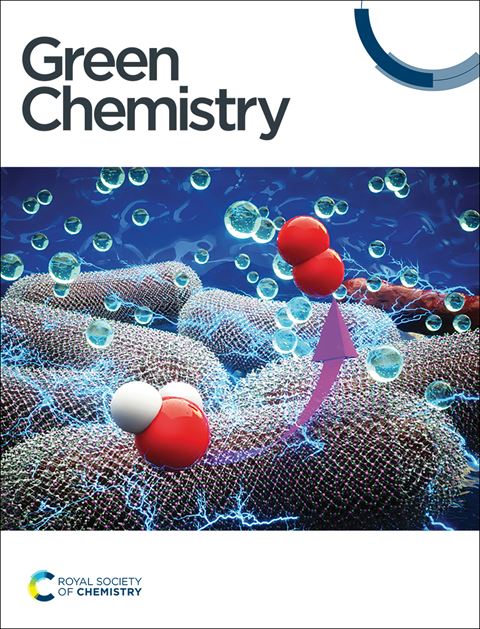Synthesis and characterisation of polycarbonates from spent lithium battery electrolytes†
IF 9.3
1区 化学
Q1 CHEMISTRY, MULTIDISCIPLINARY
引用次数: 0
Abstract
With spent lithium batteries piling up, the green and high-value utilisation of spent lithium-ion batteries (s-LIBs) becomes increasingly crucial. To address this issue, it is essential to prepare high-value copolycarbonates using s-LIBs. In this study, a range of copolycarbonates of isosorbide (ISB), bisphenol A (BPA), and s-LIBs were synthesised using 1,3-(p-toluic acid zinc salt)Im ZnCl3 as a catalyst. In this way, high molecular weight copolycarbonates (PIBs) (Mw = 57 000–110 000 g mol−1) were obtained. By introducing thermally stable and flexible ISB units, the thermal stability of copolycarbonates was enhanced, and the flexibility of polymer chains was improved. This study showcased the potential for developing environment-friendly soft polycarbonates that can overcome the inherent brittleness of BPA polycarbonates.

废旧锂电池电解液聚碳酸酯的合成与表征
随着废旧锂电池的堆积,废旧锂离子电池(s-LIBs)的绿色和高价值利用变得越来越重要。为了解决这一问题,必须使用s- lib制备高价值的共碳酸酯。在本研究中,以ZnCl3为催化剂,合成了一系列异山梨酯(ISB)、双酚a (BPA)和s- lib共聚物。用这种方法可以得到高分子量的共碳酸酯(PIBs) (Mw = 57 000 - 110 000 g mol−1)。通过引入热稳定和柔性ISB单元,增强了共聚物的热稳定性,提高了聚合物链的柔韧性。该研究显示了开发环境友好型软聚碳酸酯的潜力,该聚碳酸酯可以克服BPA聚碳酸酯固有的脆性。
本文章由计算机程序翻译,如有差异,请以英文原文为准。
求助全文
约1分钟内获得全文
求助全文
来源期刊

Green Chemistry
化学-化学综合
CiteScore
16.10
自引率
7.10%
发文量
677
审稿时长
1.4 months
期刊介绍:
Green Chemistry is a journal that provides a unique forum for the publication of innovative research on the development of alternative green and sustainable technologies. The scope of Green Chemistry is based on the definition proposed by Anastas and Warner (Green Chemistry: Theory and Practice, P T Anastas and J C Warner, Oxford University Press, Oxford, 1998), which defines green chemistry as the utilisation of a set of principles that reduces or eliminates the use or generation of hazardous substances in the design, manufacture and application of chemical products. Green Chemistry aims to reduce the environmental impact of the chemical enterprise by developing a technology base that is inherently non-toxic to living things and the environment. The journal welcomes submissions on all aspects of research relating to this endeavor and publishes original and significant cutting-edge research that is likely to be of wide general appeal. For a work to be published, it must present a significant advance in green chemistry, including a comparison with existing methods and a demonstration of advantages over those methods.
 求助内容:
求助内容: 应助结果提醒方式:
应助结果提醒方式:


